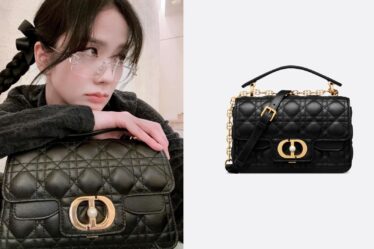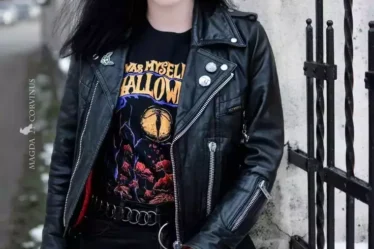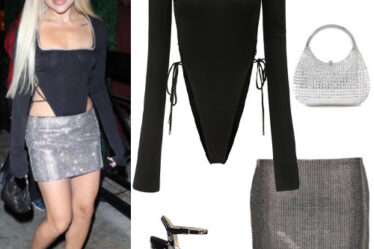
The hottest place to shop in New York right now? Someone else’s closet.
Over the past few years the “closet sale” has become a staple of the New York shopping scene. For the biggest ones — see Chloë Sevigny’s “sale of the century” (2023), Jenna Lyons’ so-called stoop sale (2024) and Jemima Kirke’s remote-to-Soho Red Hook event (2024) — lines wrapped around the block, followed by headlines in The Cut, New York Times and Vogue. But it’s not just celebrities: Influencers, stylists, content creators, Substackers, podcasters, pundits — and on a small scale, the girls next door — are hosting sales too.
Now, closet sales have gone corporate. Vogue hosted one with EBay in April to benefit Los Angeles fire recovery efforts. Resale sites like Vestiaire Collective and The RealReal regularly pluck celebrities like Paris Hilton, Candace Bushnell, Kate Moss and fashion tastemakers to play host. Clothing rental app Pickle has hosted in-person sales for influencers like WhoWhatWear’s Danielle Bernstein and Brigette Pheloung, who goes by Acquired Style online, while the LA-based app Detoure sells influencers’ unwanted clothes on the cheap online and at pop-ups.
The rising popularity of closet sales, which many praise for promoting circularity and driving personal connections, says a lot about the state of shopping. While both the resale market and vintage’s cultural cred have been steadily growing, creating urgency around gluts of merchandise online is a challenge for resale platforms and individual sellers alike. Buyers, too, craving uniqueness, are seeking out more curated shopping experiences. Plus, in a more challenging economy, shoppers are looking for deals, which they’re likely to find at closet sales: At Vogue’s, designer Willy Chavarria’s jaw dropped when he saw a floral Balenciaga dress, priced at $500.
“People are so bombarded with prompts to purchase nonstop, they have to be presented with something either very singular or special, or personally tied to them to even penetrate their consciousness anymore,” said Anna Gray, a content creator and vintage seller who has hosted sales for Substackers and stylists Leandra Cohen, Becky Malinsky and Emilia Petrarca.
Curation, Differentiation, Excitement
On a base level, closet sales are fun: The feral queuing and chance to meet a famous or influential seller make it more likely that shoppers will walk away with a story. One shopper, for example, went viral on TikTok when she found Jenna Lyons’ old J.Crew ID in the Balenciaga bag she purchased at her sale last June. Yes, they’re a commitment, but there’s something satisfying about having to work for it.
“Online shopping is about instant gratification … it’s devoid of any emotion. There’s no discovery involved,” said Liana Satenstein, the writer behind the Substack “Neverworns,” who helped kick off the craze, co-hosting sales with actress and style muse Chloë Sevigny, editors Lynn Yaeger and Sally Singer, and more.
Interest in closet sales speaks to consumers’ growing desire for curation and differentiation. It’s even become a theme in luxury e-commerce: as Farfetch and Matchesfashion faltered last year, experts in part faulted their lack of curation compared with survivors MyTheresa, Moda Operandi and Ssense. Shopping one person’s old clothes breaks the algorithm-driven sameness that dominates fashion in the social media age.
“Everything you see is what everybody else sees … If you have any individuality and want to look and feel different, you want the opposite of that,” said Jesse Lee, whose e-commerce platform Basic.Space sells elite tastemakers like vintage seller Justin Reed, jewellery designer Jess Hannah and Sporty and Rich founder Emily Oberg’s pre-owned fashion alongside art, furniture and special edition designer collaborations.
Plus, it mirrors a wider shift toward following personalities that’s swept every pocket of culture and will become more evident in shopping in general, said Lee.
“The future of retail, whether it’s secondhand or not, is going to be a more democratic, longtail approach of different niches, rather than what Nordstrom or Ssense says you should buy,” said Lee. “It used to be magazines and institutions, now it’s social media. For consumption, including fashion, it’s going to happen.”
Predictably, there’s high demand for celeb-fronted sales — at Vogue’s Gigi Hadid played host downstairs while Cynthia Erivo picked through jackets upstairs. But the most successful sales aren’t always hosted by the most recognisable name, said Gray. Satenstein said she’s seen success with more niche personas, like Laura Reilly, the writer of shopping newsletter Magasin, who draw in shoppers for more practical reasons; they already know they like the host’s style and what size they are. Model Paloma Elesser and stylist Gabriella Karefa-Johnson, for instance, hosted a sale catered to mid-to-plus size shoppers last summer.
“You’ve seen her wear it on Instagram before and you’re like ‘I like the way she styled that, now she’s selling it, now I can wear it,” said Gray.
A Marketing Moment
In online resale, storytelling opportunities can be sparse. Closet sales, on the other hand, are a way to lean into that element. When helping clients clean their closets, Satenstein found items — the Chanel suit a woman wore when Bill Clinton flirted with her, for example, alongside cool pieces without labels resellers would be hesitant to take — that she felt couldn’t be done justice online.
“An incredible story adds lore and value to a piece … a resale platform doesn’t quite understand what to do with [a lot of these great pieces],” said Satenstein. “It goes into this nebulous space, they don’t know how to market it.”
Taking a cue from closet sales’ success, resale platforms, in turn are using celebrity sales, to drive traffic. Alexis Hoopes, Ebay’s global head of fashion, likens the urgency around the closet sales it’s done with Elton John, Vogue and stylists Karla Welch and Ilaria Urbinati, to streetwear-style drops. For Paris-based Vestiaire Collective, buzzy closet sales are a tool for growing awareness in the US market. Its online Paris Hilton sale sold out in eight hours; Vestiaire saw a 15 percent lift in Google searches while it was promoting it.
“We want to amplify what our platform is, which is helping people connect with the world’s best closets,” said Samina Virk, North American CEO of Vestiaire Collective, adding that “working with celebrities, tastemakers, curators, and influential women,” has been crucial.
Alongside traffic-driving celebrity partnerships, resale platforms also increasingly tap smaller tastemakers — who sell their own clothes and highlight things under their name — to help shoppers wade through what can be intimidating mountains of merchandise.
“We have 2.3 billion product listings. There’s incredible inventory on our site that not everyone knows about,” said Hoppes. “This is a way to create personality, curation and context.”
Content shared from www.businessoffashion.com.



